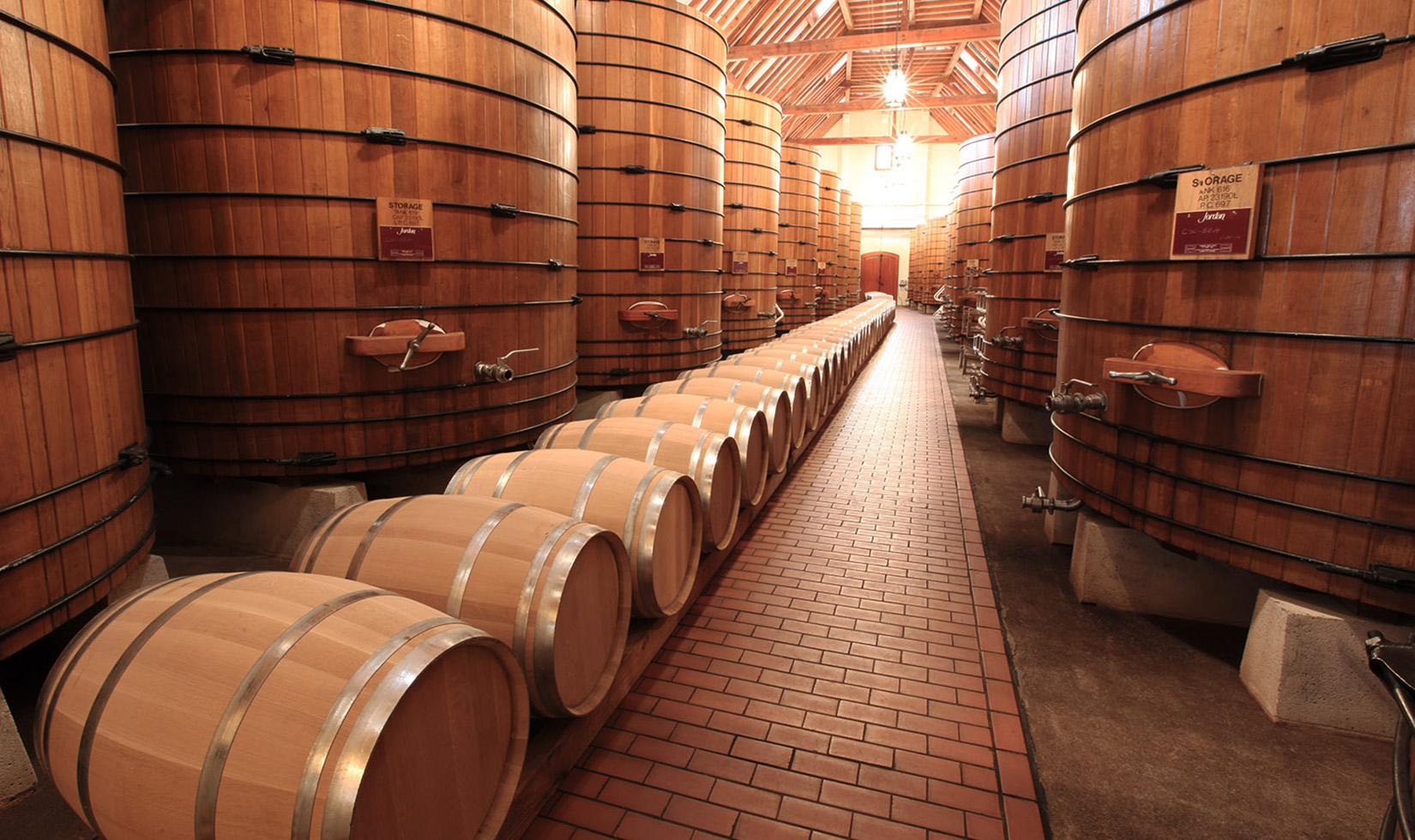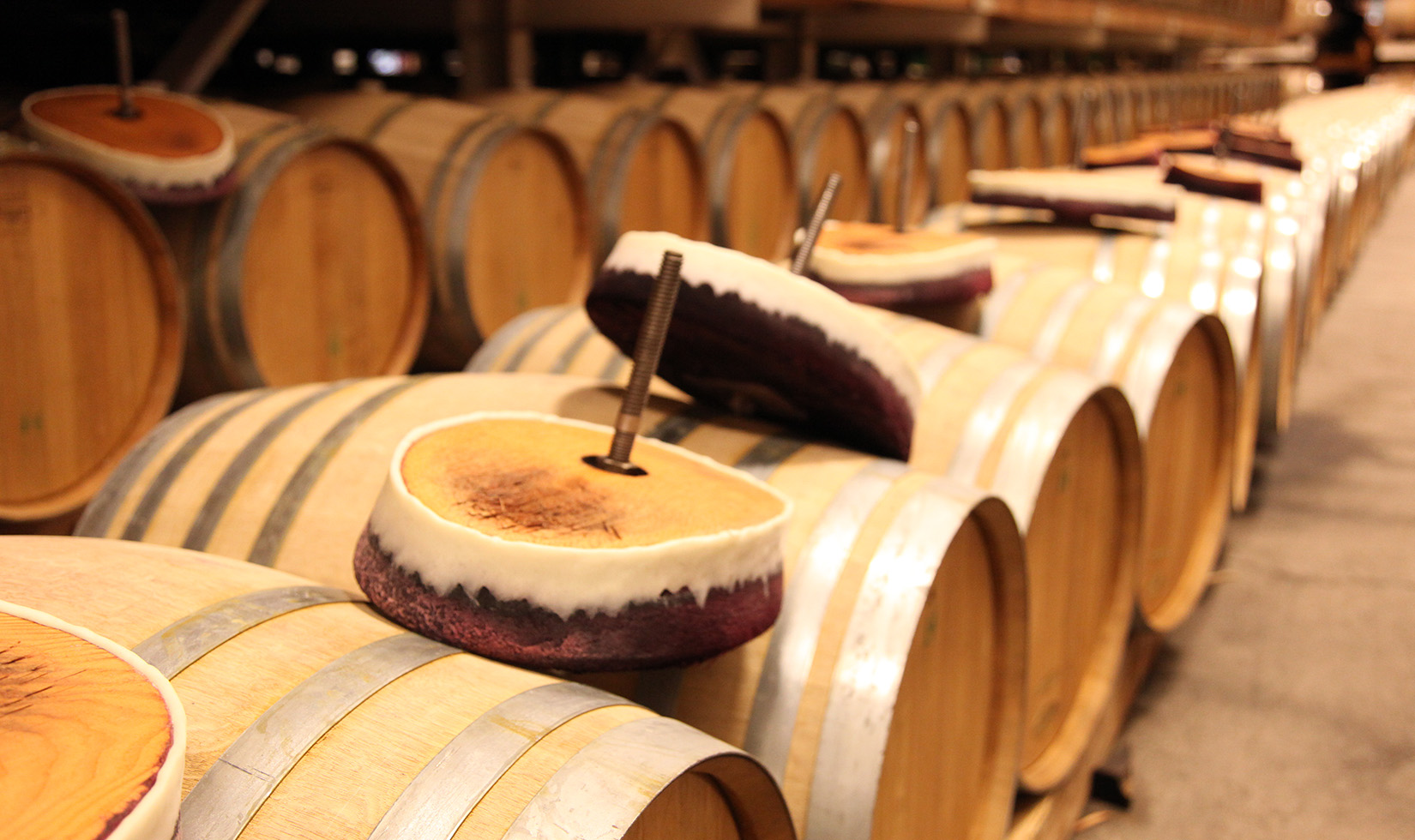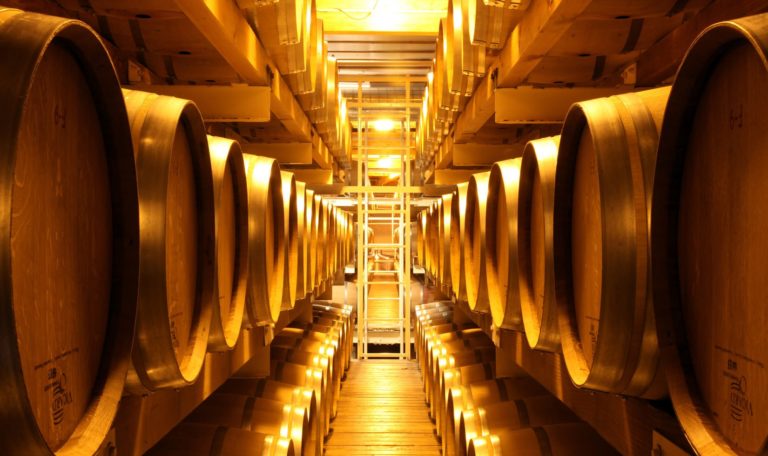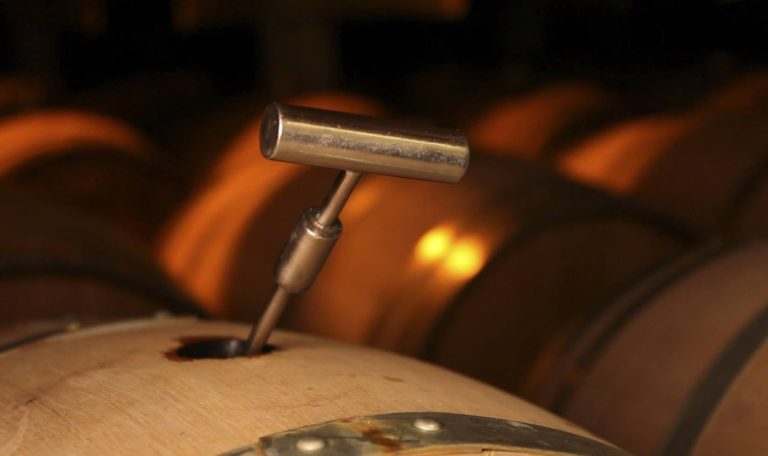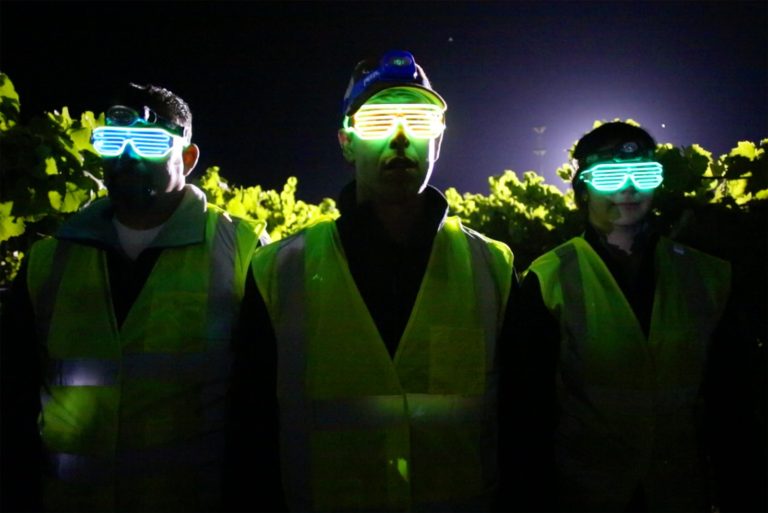Jordan is one of the few American wineries designed around a grand hall filled with large oak vats, more often found in Europe. These upright oak tanks are central to our winemaking style of crafting Jordan Cabernet Sauvignon with soft, silky tannins. Young red wines are moved in these oak vats after their primary fermentation to naturally undergo malolactic fermentation. But before a single drop of red wine can be placed in the Jordan Oak Tank Room, these 6,000-gallon vats–constructed onsite in 1976–must be sealed with a special tallow. Tallowing is an old-world winemaking technique rarely found in the United States, and the Jordan cellar team takes great pride in tallowing the Jordan oak tanks every year. This wine education video demonstrates the art of tallowing oak vat doors.
There are 12 towering oak tanks at Jordan, each with an oval oak door and an old-fashioned handle. The tallow we make to seal the Jordan oak tank doors is made of a special wax mixture versus the animal fat of a bygone era–and our techniques for shaping the tallow have evolved slightly over the last 40 years as well. Shaping tallow is a lot like making gnocchi, so we often roll out the wax on one of our chef’s cutting boards in the barrel room. Sometimes we use a French oak barrel top as a table if we’re crunched for time. After the tallow is pressed by hand against the round oak tank doors, each portal is carefully placed back in the tank, secured and locked before every seal is checked for water-tight closure.
Tallowing is practiced twice a year in the Jordan Oak Tank Room: after harvest and before bottling.
Each year after harvest, the Jordan winemaking team creates what’s called a barrel blend of the new vintage of Jordan Cabernet Sauvignon, choosing to blend all of the top grapes from each vineyard together rather than keeping them separated by vineyard throughout the aging process. This blending-before-barrel technique also contributes to Jordan’s elegant, smooth style, allowing the wine’s tannins to soften and the flavors of cabernet sauvignon, merlot, petit verdot and malbec juice can marry. After the barrel blend completes malolactic fermentation in the upright oak vats, the newest vintage of Jordan Cabernet Sauvignon will move to 100 percent France oak barrels, each holding 60 gallons. The tallow has finished its job of fortifying the oak vat doors until summer.
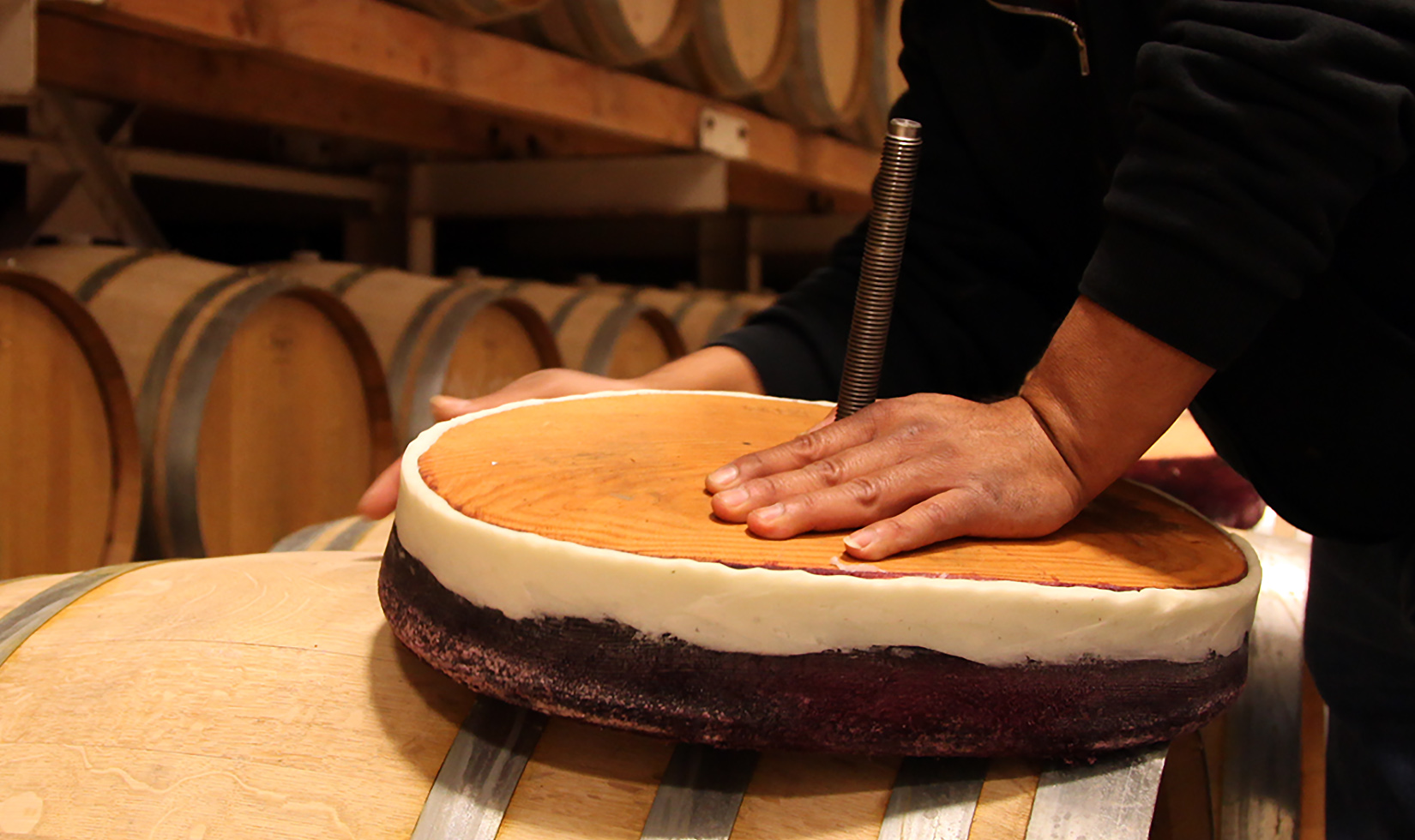
After a year of aging in a combination of new and one-year-old French oak barrels, Jordan Cabernet Sauvignon is almost ready to be bottled–but the winemakers need the tallowed oak tanks for one critical winemaking practice before bottling: egg white fining. The wine is moved from small barrels back to the oak tanks so that eggs can be cracked and their whites placed in the vats. Egg whites help soften cabernet sauvignon’s tannins. Egg white fining is the last winemaking step before wine bottling.
